#efik
Explore tagged Tumblr posts
Text
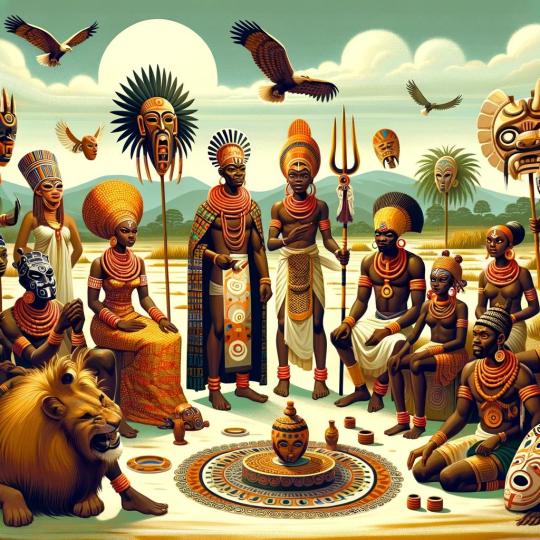
The 1815 Igbo conspiracy in Jamaica’s Saint Elizabeth Parish, which involved around 250 Igbo slaves, described as one of the revolts that contributed to a climate for abolition. A letter by the Governor of Manchester to Bathurst on April 13, 1816, quoted the leaders of the rebellion on trial as saying “that ‘he had all the Eboes in his hand’, meaning to insinuate that all the Negroes from that Country were under his controul”. The plot was thwarted and several slaves were executed.
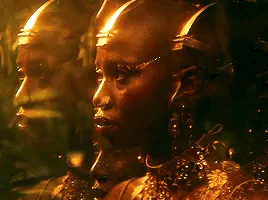
The 1816 Black River rebellion plot, was according to Lewis (1834:227—28), carried out by only people of “Eboe” origin. This plot was uncovered on March 22, 1816, by a novelist and absentee planter named Matthew Gregory “Monk” Lewis. Lewis recorded what Hayward (1985) called a proto-Calypso revolutionary hymn, sung by a group of Igbo slaves, led by the “King of the Eboes”. They sang: Oh me Good friend, Mr. Wilberforce, make we free! God Almighty thank ye! God Almighty thank ye! God Almighty, make we free! Buckra in this country no make we free: What Negro for to do? What Negro for to do? Take force by force! Take force by force!

“Mr. Wilberforce” was in reference to William Wilberforce a British politician, who was a leader of the movement to abolish the slave trade. “Buckra” was a term introduced by Igbo and Efik slaves in Jamaica to refer to white slave masters.
#buckra#efik#igbo#igbos#african#afrakan#kemetic dreams#brownskin#brown skin#afrakans#africans#african culture#igbo culture#igbo attire#igbo ladies#igbo language#igbo village#igbo women#igbo names#sunday igboho#igboland#william wilberforce
23 notes
·
View notes
Text
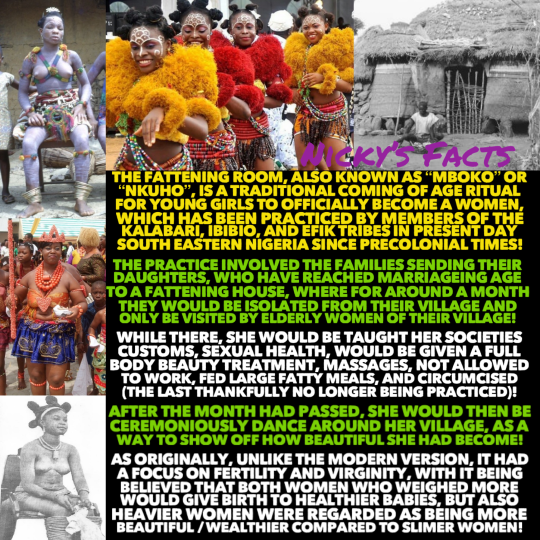
The Fattening Room is a example of how are femininity and beauty is defined differently around the world!💜
🚺🇳🇬🚺
#history#fattening room#mboko#nkuho#nigeria#african history#efik#ibibio#kalabari#femininity#traditional practices#womens history#black femininity#soft black girls#body posititivity#traditional femininity#cottagecore#black excellence#coming of age#african women#girlhood#womanhood#fertility#black girl beauty#african culture#pre colonial africa#black history#sisterhood#nickys facts
52 notes
·
View notes
Text








#genocide of indigenous people never ended#real story of thanksgiving#fuck thanksgiving#thanksgiving#indigenous#whitewashing of genocide#genocide#indigenous rights#indigenous food#wojapi#bison ribs#European settlers#settler colonialism#settler colonialism has stolen the lives and lands of millions around the globe and across millenia#rummaniyeh#palestine#palestinian food#pomegranate#jaffa#nakba 1948#sopa de mani#bolivia#indigenous andeans#afang soup#efik#nigeria#ibibio#indigenous roots#indigenous of the americas#know your history
8 notes
·
View notes
Text
mythology of the day
Efik- Ukọñ Esuk~ He is regarded as the deity of Adiabo
Iroquois- Heno~ aka The Thunderer is a powerful god who controls storms, lightning, and thunder. He is a protector of the people.
Aztec- Coatlicue~ fertility goddess wearing a serpent skirt
2 notes
·
View notes
Text
The Igbo Influence on The Lion King: Mufasa
The beloved Disney movie The Lion King features many characters and names that hold deeper meanings and connections to various cultures. One such influence is the Igbo language, which plays a subtle yet significant role in shaping the characters, adding layers of depth to the story. Obasi: The Strong Leader In The Lion King, Obasi is a powerful and wise character, the leader of the last…
3 notes
·
View notes
Text
It warms my heart so much when I see my people being recognized. Even if it's only one side. Even if it's in something as insignificant as a fictional book, a song or even in the media.
I don't see that often. I don't see the Efik people, I don't see the Ibibio people. You'd expect to see a lot of the three major tribes but no.. I don't see Hausa people either.
There are these fan pages on IG and TikTok for Igbo women and Yoruba women. While I understand that none of that says anything about the value of each tribe, it brings a sense of togetherness. Knowing your people, seeing them represented. And to be honest, it is quite lonesome, not having that.
I have seen more Edo girls than Hausa in the media, yet we're supposed to be a major tribe? Even when I do see them on TV and others, they are limited to being the uneducated. It's always Ekaette the housemaid, Musa the gateman, Ubong the driver. All with exaggerated accents to purposely make mockery.
We are not reminded day in, day out of the way igbos switch their "l" and "r" or the annoying "H" factor Yorubas have. When it's picked on in a movie, the whole internet picks a fight with the scriptwriters.
But when a certain Efik girl picked a fight for the same reason, she was clowned and told "it's not that deep"
When I meet new people and they ask where I'm from, I often make them guess but in doing so, I break my own heart. You'd once again expect that they'd guess the three major tribes but literally all the time they have no idea after guessing Yoruba and Igbo.
Are those the options? Igbo, Yoruba or unidentified? Are those the only tribes?
One day I will have the time to properly talk about the superiority complex of Igbos and the Yorubas' need to shun everyone in sight (most times, poorly executed). Of course these qualities do not apply to every single Igbo and Yoruba person.
I, Elowyn , am not impressed with the overlooking of such industrious tribes by the rest of Nigerians at large.
Bless 🤍
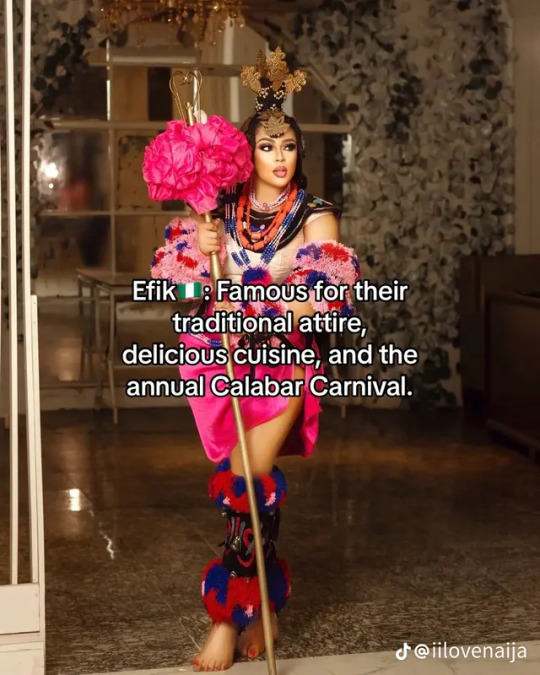
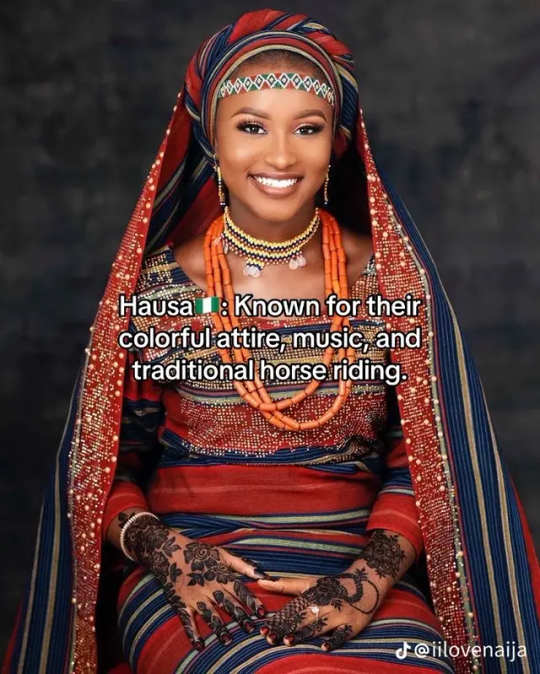
4 notes
·
View notes
Text
PRENUPTIAL: The Fattening Room Experience
The fattening room is a unique and ancient tradition practiced by some Nigerian cultures, particularly the Efik and the Anang, to prepare young women for marriage and motherhood. It is a form of seclusion and pampering that can last for months or even years, depending on the wealth and preferences of the family. Young ladies are taught how to cook During this period, the women are fed rich and…
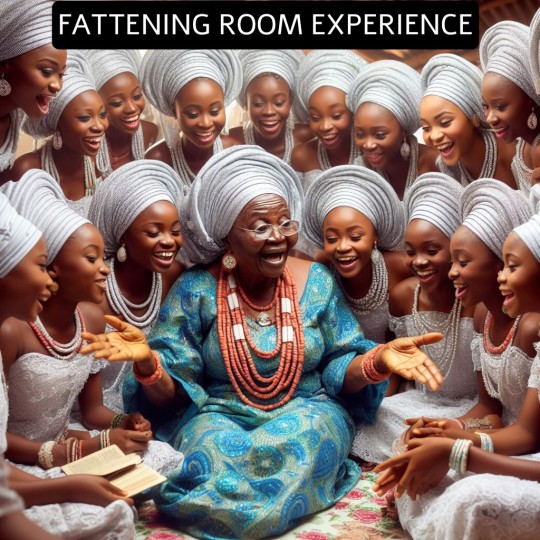
View On WordPress
1 note
·
View note
Text
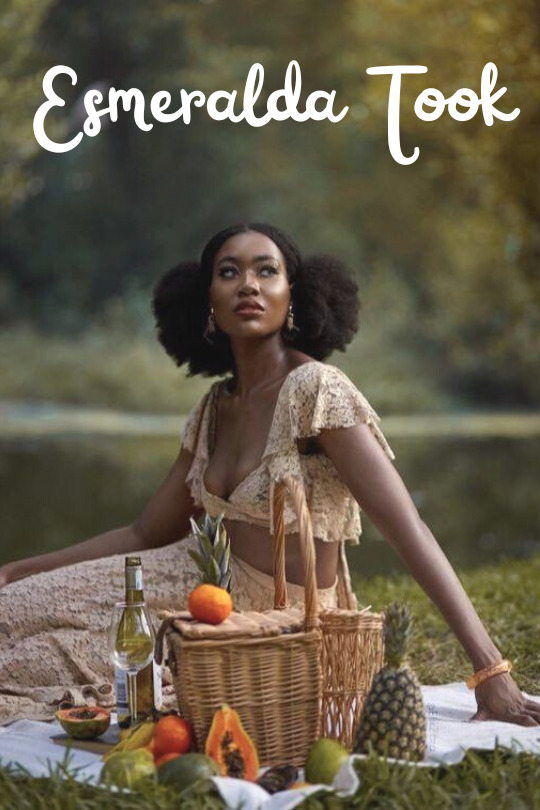
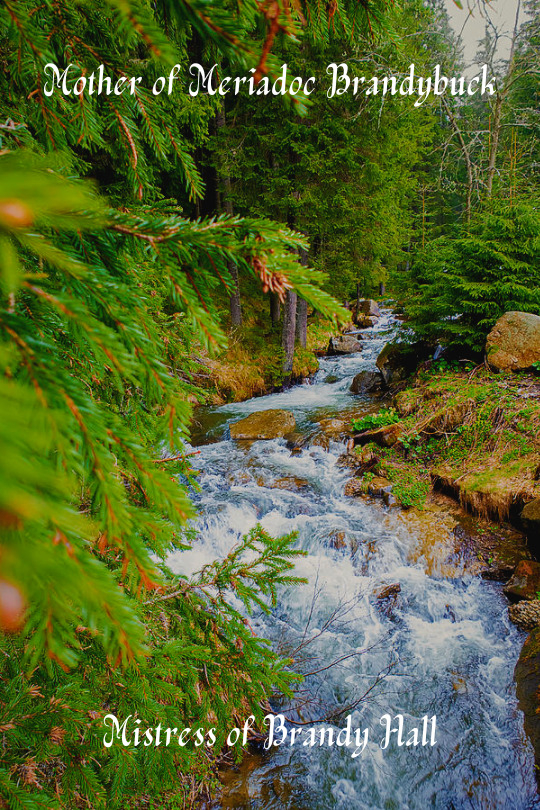
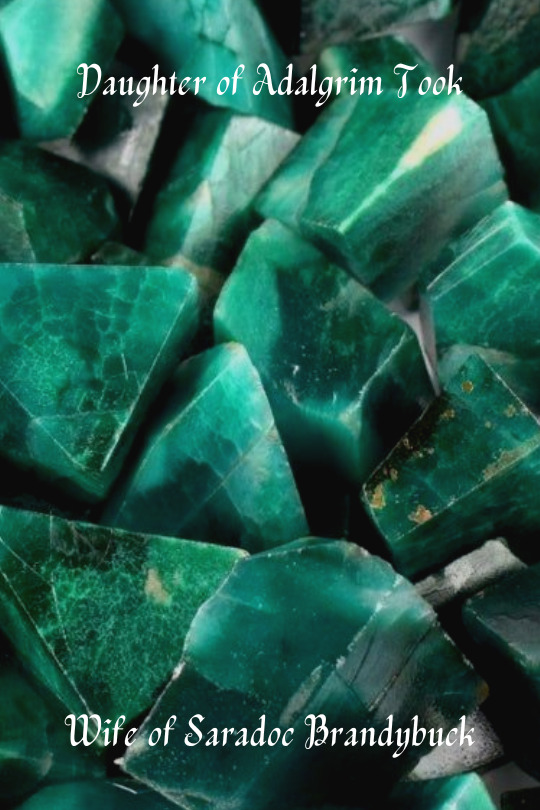

@tolkienofcolourweek day five | hobbits | esmeralda took
Esmeralda Brandybuck, née Took, was the daughter of Adalgrim Took. She married into the Brandybuck line, and when her husband Saradoc, became the Master of Brandy Hall, she became its Mistress. Her only child was Meriadoc, who accompanied Frodo Baggins on his great quest, and earned great renown around the world.
#tocweek2023#tolkienedit#oneringnet#lotr#lotredit#lord of the rings#the lord of the rings#my edit#tefain nin#my writing#edit writing#model: efik zara
36 notes
·
View notes
Text
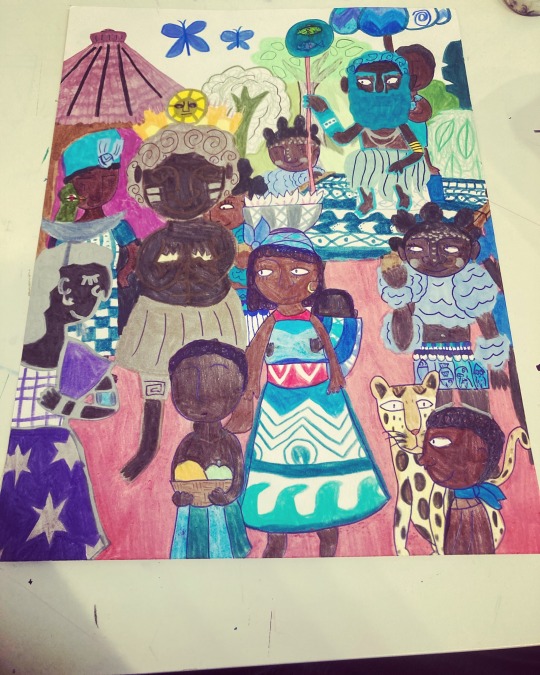
This is a drawing I did at Sage Studios called, “The Water God’s god-dom enters the house of the Sun God and Moon Goddess.” It’s inspired by an old Nigerian myth about how the sun and moon gave up their home for the water to live in the sky, and recalling from a retelling illustrated by Blair Lent, I was greatly inspired by how these deities had their own people or living things they governed over. I also took influence from Renaissance, Baroque, and early 19th century paintings that depicted Greco-Roman mythological events and gave it a more inclusive flair in my own style. I used colored pencils, pen, regular pencils, and permanent maker on paper. It took me from late Spring to August 11th, 2023 to finish this.
#nigerian mythology#west african folklore#i support representation#african mythology#efik ibibio fairy tales#art
2 notes
·
View notes
Text
I love the brunt of zora neale hurston’s work but she so wrong for lying about the dahomey & lying on cudjoe lewis like dat .
and idk how much of it is hurston& moreso the presumption ppl have made about barracoon being some sort of history… bc it was published at the time in new ebony mag as fictional. and theres this remark on her work (which definitely maps onto barracoon’s prose.. passages about heathens and all)

#‘Yoruba’ HES SPEAKING EFIK. AN ETHNICITY WHO AT THE TIME LIVED THOUSANDS OF MILES AWAY FROM THE DAHOMEY?#she derived much of her conjectures on dahomey str8 from a pro slavery white author & claimed it was cudjoe’s words#yn.#history#africa#blackness#pseudohistory
4 notes
·
View notes
Text
Look book: 8 Bridal Photoshoot Inspiration Vol 3
Hi there, welcome to another edition of Nigerian bridal photoshoot where we compile the best and most extravagant looks for your inspirational purposes. Today’s editions comes from 4 amazing tribes in Nigeria when it comes to traditional bridal weddings, we love the elegance and rich colour contrast they all exhibit and trust us when we say they are elegant. If you haven’t decided on a look for…
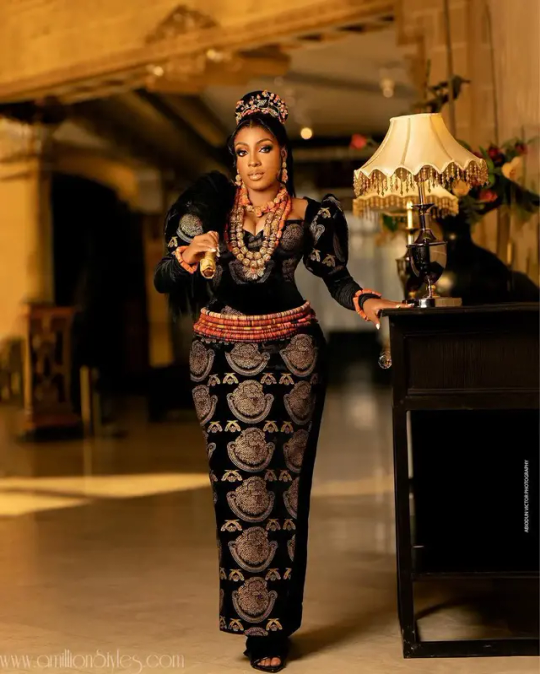
View On WordPress
0 notes
Text
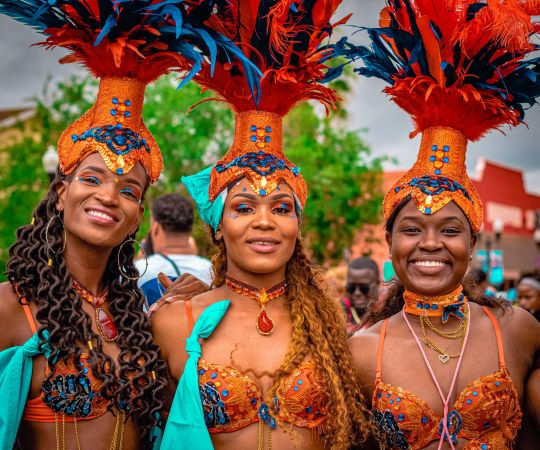
Most of the enslaved Africans brought to Barbados were from the Bight of Biafra (62,000 Africans), the Gold Coast (59,000 Africans), and the Bight of Benin (45,000 Africans).[2] Other African slaves came from Central Africa (29,000 slaves), Senegambia (14,000 Africans), the Windward Coast (13,000 slaves) and from Sierra Leone (9,000 slaves).

Africans from the Bight of Biafra were primarily Igbo, Ibibio and Efik; Africans from the Gold Coast were primarily Akan; Africans from the Bight of Benin were primarily Yoruba, Ewe and Fon; and Africans from Central Africa were primarily Kongo

I’m originally from Igbo – US singer Rihanna opens up
Forbes’ wealthiest female singer, Rihanna, has disclosed that she is originally an Igbo woman.
Igbo is one of the dominant tribes in Nigeria, and the singer and brand influencer said her mother told her so.
Forbes recently named Rihanna a billionaire and she was officially recognised one of the wealthiest female musicians in the world.
Rihanna’s net worth is estimated at $1.7 billion while still receiving almost $1.4 billion from her beauty cosmetics l
Rihanna’s other fortune comes from her lingerie company Fenti, which is worth another $270 million, among other businesses.
Her mother is an Afro-Guyanese, while her father is a Barbadian of African and Irish descent.
She said: “My mom told me that I am originally an Igbo woman. Igbo is a tribe in Africa,” the singer said in a recent interview and has trended in Nigeria’s social media space for many hours.
Many Nigerians on social media, especially those from the Igbo tribe are now asking her to return to her roots, while others hailed her for coming out with the revelation.
Rihanna also has two brothers, Rorrey and Rajad Fenty.

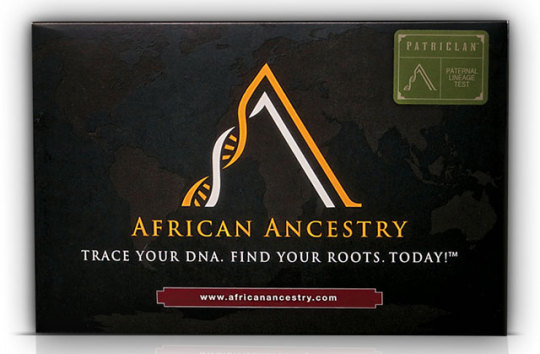
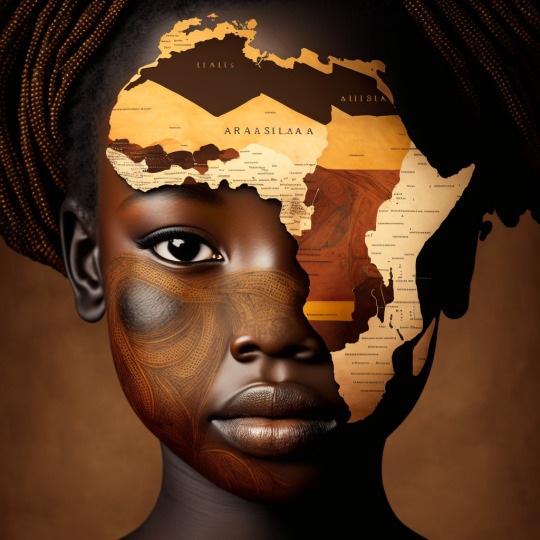
#african#afrakan#kemetic dreams#africans#brownskin#brown skin#afrakans#african culture#afrakan spirituality#barbados#rihanna#nigrians#islander#bight of biafra#gold coast#bight of benin#asante#ewe#fon#fante
109 notes
·
View notes
Text
The chemistry behind Calabar Beans

Calabar beans, also known as "poison calabash," are leguminous plants native to West Africa. The seeds of Calabar beans contain highly toxic alkaloids (mainly concentrated in the cotyledons), with "physostigmine" being the primary active ingredient.

Physostigmine can interfere with the metabolism of acetylcholine and is neurotoxic to humans; oral ingestion of 6-10 mg can cause asphyxiation and death within a short period. The Efik people, an indigenous tribe in Nigeria, used Calabar beans for "divine judgment." Those accused of crimes or witchcraft would drink a decoction made from ground Calabar beans. If they died from poisoning, they were considered guilty; if they survived due to vomiting, they were acquitted, which was seen as the will of the gods.
Calabar beans were also used in duels, where one bean was split in half, and each duelist consumed a portion. The survivor was declared the winner. However, since half a bean's toxicity is already at a lethal dose, it was not uncommon for both parties to die.
6 notes
·
View notes
Text

1895. King Duke IX Of Calabar, Nigeria
King Duke allegedly wore two crowns, one to show his Efik kingship status and another from the Brıtish.
3 notes
·
View notes
Text
gods of the day
Efik- Asari Mandu~ A river goddess located at Ifondo river in Akpabuyo Local Government Area
Somali- Wagar~ A woman associated with fertility.
4 notes
·
View notes
Text
What is the Ekpe Society?
The Ekpe society, also known as the Leopard Society, is a traditional fraternal secret society found primarily among the Ejaham, Efik, Ibibio, and Igbo peoples of southeastern Nigeria and western Cameroon. This society plays a significant role in the cultural, social, and political life of these communities. The society is known for its elaborate rituals, symbols, and hierarchical structure. The…

View On WordPress
7 notes
·
View notes